Venus Statistics
| Planetary Symbol: |
 |
Name in Roman/Greek Mythology: |
Venus/Aphrodite |
| Diameter: |
12,104 km (7,522 miles) |
Rotation Period about Axis: |
243 days (retrograde) |
| Mass: |
4.87x10^24 kilograms (0.82 x Earth's) |
Revolution Period about the Sun: |
0.62 years |
| Density: |
5,243 kg/m^3 |
Tilt of Axis: |
177-178o |
| Minimum Distance from Sun: |
108 million km
(67 million miles) |
Surface Gravity: |
8.87 m/s^2 (0.90 x Earth's) |
| Maximum Distance from Sun: |
109 million km
(68 million miles) |
Average Temperature (C/F): |
457o C (855o F) |
| Orbital Semimajor Axis: |
0.72 AU (Earth=1 AU) |
Average Surface Temperature (K): |
730K |
| Minimum Distance from Earth: |
40 million km
(25 million miles) |
Satellites: |
0 |
 Venus Image Archive
Venus Image Archive
 Comparative Planetary Statistics -- in table form
Comparative Planetary Statistics -- in table form
 Comparative Orbital Statistics -- in table form
Comparative Orbital Statistics -- in table form
 Actual Distance to Earth
Actual Distance to Earth
You might also be interested in:
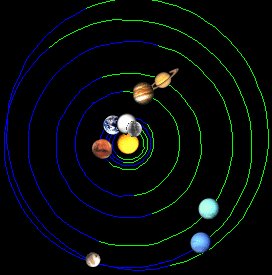
There is a really neat internet program called Solar System Live that shows the position of all of the planets and the Sun for any given day. If you go to that page, you'll see an image similar to the
...more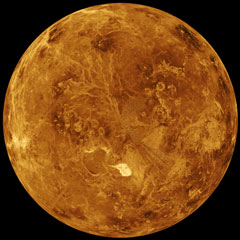
Would you expect to find ice caps and snow fields on Venus? Not likely! Venus is the hottest planet in our Solar System, and those high temperatures extend right on up to the poles. Though there aren't
...more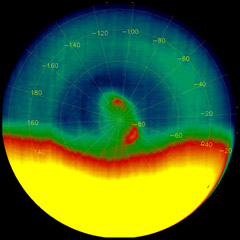
Venus has odd, swirling vortices in its atmosphere above each of the planet's poles. These vortex structures were first detected over the North Pole by NASA's Pioneer Venus Orbiter in 1978. The European
...more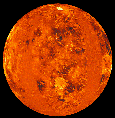
Venus is the second planet from the Sun, and is Earth's neighbor in the solar system. Venus is the brightest object in the sky after the Sun and the Moon, and sometimes looks like a bright star in the
...more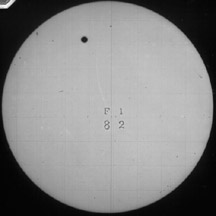
Transits of Venus are extremely rare astronomical phenomena. They occur in pairs, separated by eight years, with more than a century elapsing between successive pairs of transits. There will be two Venus
...more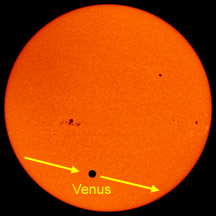
The planet Venus periodically passes directly between Earth and the Sun. This event, which is somewhat similar to a solar eclipse, is called a transit of Venus. Viewed from Earth, Venus and Mercury are
...more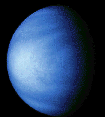
A planet goes through cycles of history depending upon how it cools in time. The following may be the history of Venus. Venus formed about 4 Billion Years ago. at the conclusion of forming it continued
...more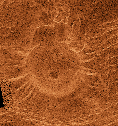
This is an example of a volcanic tick.
...more

 Comparative Planetary Statistics -- in table form
Comparative Planetary Statistics -- in table form
 Comparative Orbital Statistics -- in table form
Comparative Orbital Statistics -- in table form


 Venus Image Archive
Venus Image Archive











